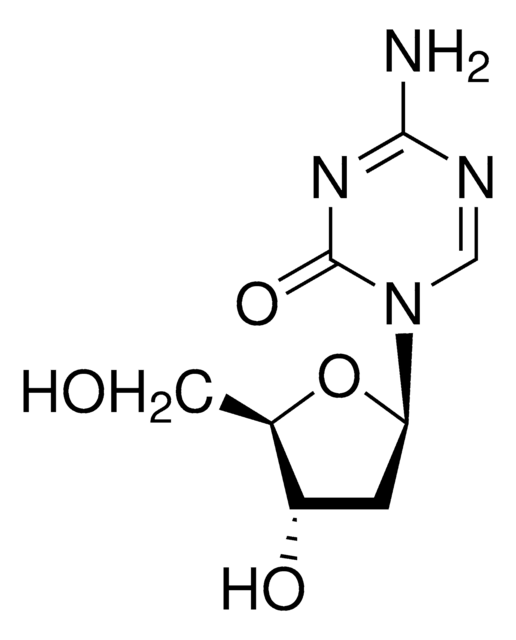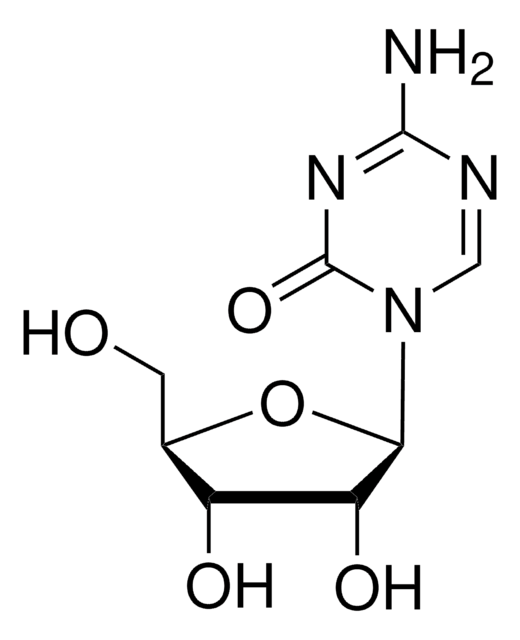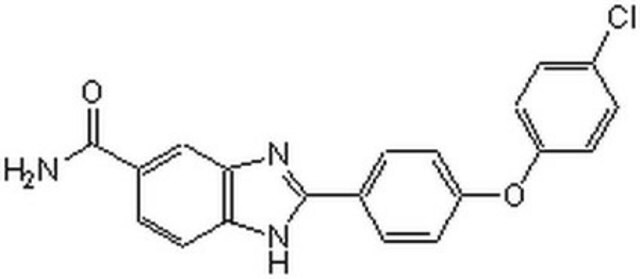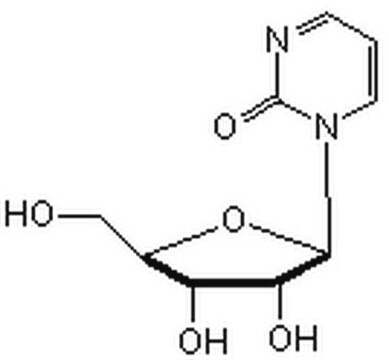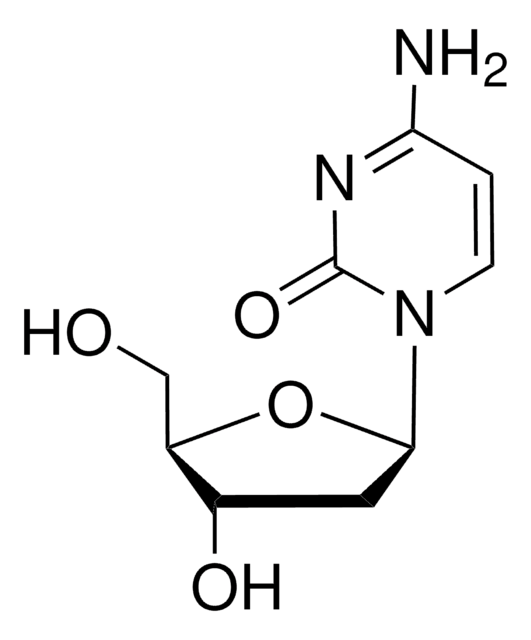189825
5-Aza-2′-Deoxycytidine
A cytosine analog that acts as a DNA methyltransferase inhibitor.
Synonim(y):
5-Aza-2′-Deoxycytidine, 5-Aza-CdR, 5-Aza-dC, 2′-Deoxy-5-azacytidine, Decitabine
About This Item
Polecane produkty
Poziom jakości
Próba
≥98% (HPLC)
Postać
lyophilized
producent / nazwa handlowa
Calbiochem®
warunki przechowywania
OK to freeze
rozpuszczalność
methanol: 1 mg/mL
50% acetic acid: 25 mg/mL
DMSO: 25 mg/mL
Warunki transportu
ambient
temp. przechowywania
2-8°C
InChI
1S/C8H12N4O4/c9-7-10-3-12(8(15)11-7)6-1-4(14)5(2-13)16-6/h3-6,13-14H,1-2H2,(H2,9,11,15)
Klucz InChI
XAUDJQYHKZQPEU-UHFFFAOYSA-N
Opis ogólny
Działania biochem./fizjol.
DNA methyltransferase inhibitor
Opakowanie
Ostrzeżenie
Uwaga dotycząca przygotowania
Rekonstytucja
Inne uwagi
Takebayashi, S., et al. 2001. Biochem. Biophys. Res. Commun.288, 921.
Zhu, W.G., et al. 2001. Cancer Res.61, 1327.
Hopkins-Donaldson, S., et al. 2000. Cancer Res.60, 4315.
Haaf, T. 1995. Pharmacol. Ther.65, 19.
Jones, P.A., and Taylor, S.M. 1980. Cell20, 85.
Informacje prawne
Hasło ostrzegawcze
Danger
Zwroty wskazujące rodzaj zagrożenia
Zwroty wskazujące środki ostrożności
Klasyfikacja zagrożeń
Acute Tox. 4 Oral - Eye Irrit. 2 - Muta. 2 - Repr. 1B - Skin Irrit. 2 - STOT SE 3
Organy docelowe
Respiratory system
Kod klasy składowania
6.1C - Combustible acute toxic Cat.3 / toxic compounds or compounds which causing chronic effects
Klasa zagrożenia wodnego (WGK)
WGK 3
Certyfikaty analizy (CoA)
Poszukaj Certyfikaty analizy (CoA), wpisując numer partii/serii produktów. Numery serii i partii można znaleźć na etykiecie produktu po słowach „seria” lub „partia”.
Masz już ten produkt?
Dokumenty związane z niedawno zakupionymi produktami zostały zamieszczone w Bibliotece dokumentów.
Klienci oglądali również te produkty
Nasz zespół naukowców ma doświadczenie we wszystkich obszarach badań, w tym w naukach przyrodniczych, materiałoznawstwie, syntezie chemicznej, chromatografii, analityce i wielu innych dziedzinach.
Skontaktuj się z zespołem ds. pomocy technicznej
